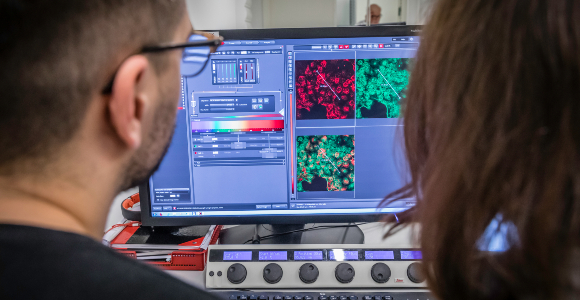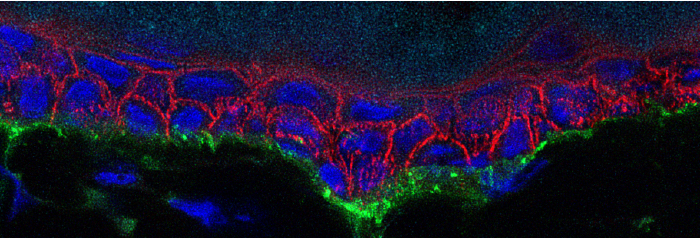Seeing is believing, which is why microscopy and imaging play traditionally a central role in biological research. The processes of life depend on a complex network of molecular interactions which take place on sub-cellular length scales and sub-second time-scales. These spatial and temporal interactions are often not detectable in biochemical bulk assays and instead require analysis in single living cells in their natural environment using advanced bioimaging techniques.
Bioimaging technologies have therefore become a central technology platform for fundamental research within the biological and biomedical sciences.

State of the Art Imaging Technique
In the Bioimaging section we apply state of the art imaging techniques and analysis to obtain quantitative spatiotemporal information on a variety of specimens. Problems range from investigation of protein and cholesterol transport in health and diseased cells over cancer diagnostics and treatment to drug delivery and characterization of biomaterials such as spider silk or 3D printed tissue. Particular focus is on sensitive optical imaging of processes taking place in living cells in their native context. Using the latest fluorescence technology, we are able to follow biochemical processes in living cells at the level of single molecules. Insights obtained by such approaches is currently revolutionizing central concepts in molecular cell biology.
We are also heavily involved in developing new forms of microscopy by building instruments tailored to our applications. In addition, a large focus is on developing better image understanding by continuous development of new computational image analysis procedures.
The research at the Bioimaging section is based on a variety of projects which combine biomedical applications of microscopy with quantitative thinking to solve biological questions using imaging approaches.
